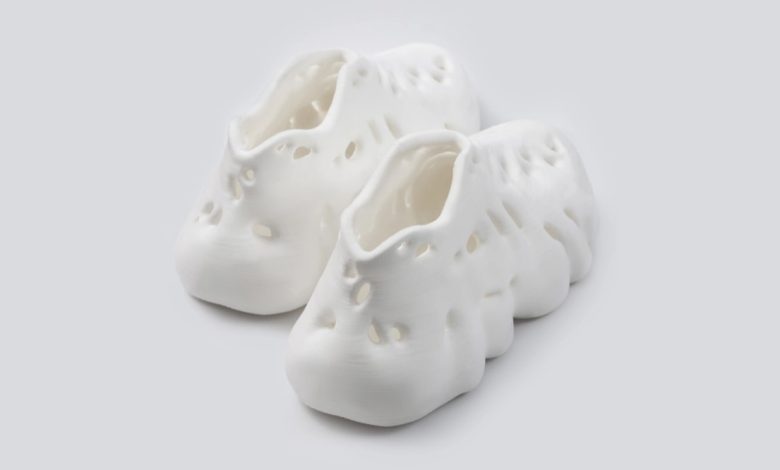The company aims to disrupt the $500 billion footwear industry by producing fully 3D printed footwear from 100% recyclable foams.
ELASTIUM, an emerging UAE-based 3D printed footwear startup, today announces the launch of its first fully 3D printed sneakers made from 100% recyclable foam. Founded in 2021 by engineer, inventor, and tech entrepreneur Robert Karklinsh, ELASTIUM combines lattice structures and the most advanced materials used in the footwear industry – foams – to break free from the limitations of traditional manufacturing and create sustainable, personalized, and truly comfortable 3D-printed footwear.
ELASTIUM’s sneakers feature lattice-structured low-density thermoplastic elastomer (TPE) foams fabricated by a proprietary granulate extrusion 3D printing technology making their sneakers soft and comfortable, like Crocs for example, yet providing cushioning and resilience comparable to high-performance sneakers.
“We are thrilled to unveil our world’s first fully 3D printed foam sneakers,” said Robert Karklinsh, founder and CEO of ELASTIUM. “Traditional shoe manufacturing is extremely slow, capital-intensive, and unsustainable. 22 out of 23 billion pairs of shoes produced each year end up in landfills, where they may take hundreds of years to decompose. At ELASTIUM, we are redefining footwear production making it rapid, on-demand, localized, and sustainable. We are also democratizing the footwear industry by providing a platform for individual creators and brands which will eventually make footwear production as easy as publishing an app on the App Store.”
Combining FGF tech and high-performance foam
To produce its sneakers, ELASTIUM uses a proprietary fused granulate fabrication (FGF) foam 3D printing technology. Because the material cost is by far the most expensive component in fully 3D printed footwear, the cost-effectiveness of the ELASTIUM process, directly using industry-standard raw materials in the form of granules, is unrivaled by any FFF or SLA/DLP foam 3D printing processes. It is also extremely versatile supporting multi-material printing in a wide range of densities, from fully dense materials down to densities as low as 0.14 specific gravity.
Unlike other 3D printed footwear manufacturers or brands that use 3D printed parts in their shoes, often relying on basic unfoamed materials, including hard-to-recycle photoresins, ELASTIUM goes further by using high-performance, lightweight, soft, and resilient TPU foams and combining them with lattice structures to create comfortable, high-performance, durable and machine washable 3D printed sneakers that you can wear with or without socks.
AI-generated and digitally owned
The first “ELASTIUM-1” model features a mono-material design that was first generated by AI, then refined and recreated in 3D by a footwear designer.
Each pair of ELASTIUM sneakers is printed on-demand, which eliminates the costs associated with traditional footwear manufacturing, including the myriad in-between steps of mold making, sewing, gluing, storage, etc., and significantly reduce carbon emissions. In addition, the sneakers are made from TPU foam that can be recycled into a new pair.
ELASTIUM-1 will be sold not only as limited edition sneakers but also as one hundred NFTs which will give their owners a right to order and reorder physical pairs even after the initial volume is sold out. These NFTs represent one of the first true applications of the concept of digital ownership as their holders practically become the owners of the design who can trade their rights of transferring the digital asset into the physical realm at any time.
The current ELASTIUM-1 model comes in twelve color options and 16 sizes with adjustable fit options and will be available for pre-order both as a physical pair and NFT on the company’s website. Additional models are currently in development and will be released throughout 2023.
Subscribe to AM Chronicle Newsletter to stay connected: https://bit.ly/3fBZ1mP
Follow us on LinkedIn: https://bit.ly/3IjhrFq
Visit for more interesting content on additive manufacturing: https://amchronicle.com


